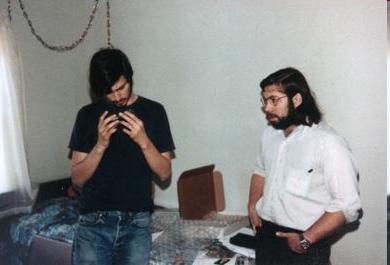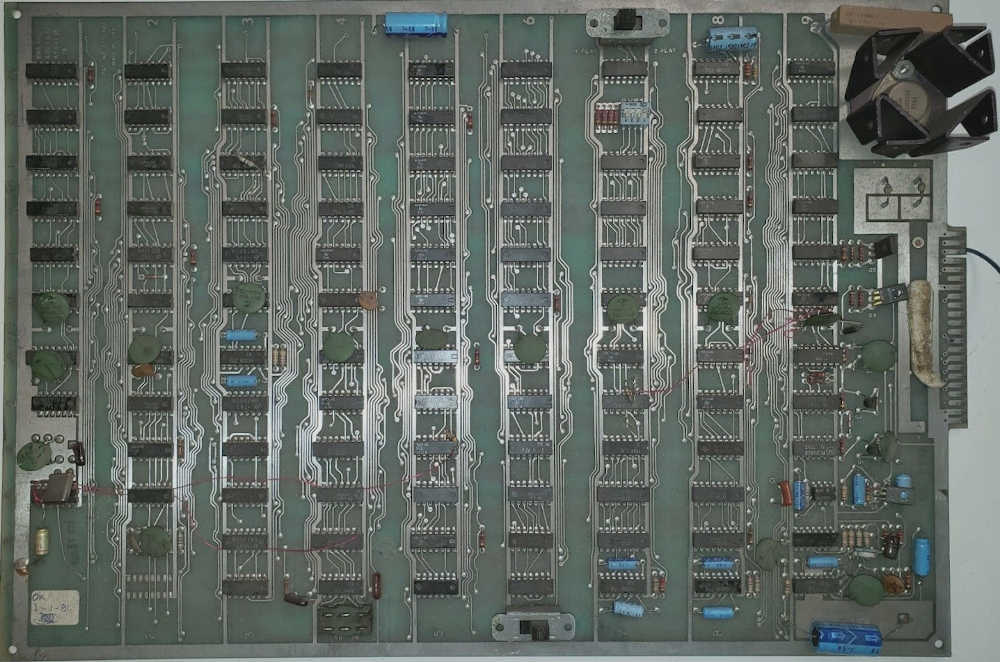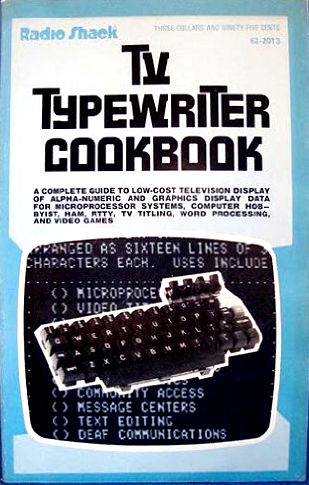| Steve Wozniak - Electronics Genius |
| Written by Harry Fairhead | |||
Page 1 of 2
The computer business is just that - a business - and the history that it writes for itself often remembers the entrepreneurs first and foremost - the technicians are nearly always forgotten. If you discover or invent something really new then the academic history will take care of you but if you simply design something really well your place in posterity is far from guaranteed. We all know how important the Apple II was in the development of the personal computer but - who created it? You probably think that it was something to do with the famous Steve Jobs and indeed it was, but it was much more to do with a lesser known Steve - Steve Wozniak. This is the story of the Apple II, an important machine, but it is also the story of Woz.
Steve Wozniak born 11 August 1950, San Jose, CA
Steve Wozniak was the son of a Lockheed engineer with a Caltech degree who designed satellites for a living. Electronics seemed to be a natural interest and Woz took to it enthusiastically. He read all he could find on the subject and designed and built his own electronics designs from an early age. A science fair project that he completed was a simple computer - it won. He was already fascinated by computers, even though the components he needed to build one cost far more than he could afford. It was in these early days that he met Steve Jobs via a mutual friend, Bill Fernandez. All three were interested in electronics but Woz, being five years older and with a natural gift for the subject, was the mentor and teacher.
Steve Jobs (left) and Woz (right)
Woz studied computer science for three years, the last year at Berkeley. While he was there his ability to design elegant and intricate circuits became clear. Phone Phreaking, hacking the now out of data phone system, was the current fashion and Woz became intoxicated with the power of being able to phone anyone anywhere. He designed a "blue box", a multi-tone frequency generator that used fewer and cheaper chips than anyone else. Of course Steve Jobs got in on the act and arranged to manufacture and sell the devices - what a combination! Woz planned to take a year off to earn money working as a technician at Hewlett-Packard but things didn't work out quite as he imagined. The distance was too far to commute back to Berkeley and studying at the local university would have involved starting over again. Anyway he was having far too much fun at HP to give it up and go back to Berkeley just yet. For the next three years during the day he worked on chip layout and in the evenings he became an electronic hobbyist. Back in Berkeley he had been keen on designing computers. He had designed over 50 different machines - but only on paper. Resources were so limited that even the output from the machines he designed had to be displayed on standard oscilloscopes rather than special purpose monitors. Woz first encountered the start of the microcomputer age when he saw one of Nolan Bushnell's Pong games at a bowling alley. A lesser man than Woz might have become hooked on the game - but not Woz. He became hooked on the game's innards - he built his own version of the game.
A breakout PCB before Woz Later Steve Jobs persuaded him to build a hard wired implementation of the "breakout" game for Atari. Nolan Bushnell was getting worried about the 150 plus chip count that most new games involved and he had heard of Woz's ability to design clever low chip count circuits - his pong used only 30 chips. The deal was that a design with 50 chips would earn $750 and under 40 chips would earn $1000. Woz's first design used 44 chips and he was so tired, the complete design had to be complete in four days, that it stayed above the magic 40 count and they only got the $750. This anecdote fails to convey the amazing achievement of getting a complex video game design down to 44 chips at all. A less inspired designer would have needed double that count! While the average electronics designer of the time was using components in the way that there were intended to be used mostly what the manufacturer's application notes said they were for. Woz on the other hand seemed to be thinking in terms of what needed to be done and what the devices could do. His circuits of the time were surprising because of the way they tended to use components in ways that you wouldn't have thought of.
Breakout
Then came the personal computer. The Altair made the cover of Popular Electronics and Woz was one of the first 32 members of the Homebrew computer club. Components were now almost cheap enough for him to realise his dream of designing, building and owning a computer. He had already built a TV terminal based on a design by Don Lancaster, a similar spirit to Woz who never had the good fortune to bump into a Steve Jobs! Don Lancaster found ways of creating a video signal without all of the complex standard components that VDUs of the time needed. For example he came up with the idea of using a piece of wire to pickup the timing pulses from a standard TV rather than implementing a long clock divider chain to do the same job. His crazy, minimal video designed are almost certainly responsible for Woz and later Clive Sinclair being able to cram video into their computer designs.
Don Lancaster's first book on digital video
From a TV terminal it would be a shortish step to a complete home computer - if only he could find a processor that was cheap enough. The 6800 he preferred was too expensive so a $25 6502 was the only possibility. Woz bought a 6502 and started his design. Rather than follow the low cost per chip/high chip count approach, Woz decided that the fewer chips the better but the main problem was memory. At the time video displays used shift registers to hold the video data which was shifted out at video speeds but each screen location could only be updated once per frame, i.e. one character every 1/50th of a second or so. Woz wanted something faster because he had in mind writing programs to implement the sort of video games he had designed for Atari. A faster video design implied using RAM rather than shift registers but at the time the standard RAM chip only provided 1024 bits of storage per chip. Steve Jobs suggested to Woz that he looked at the new 16-pin dynamic RAMs that were just beginning to become available. Dynamic RAM is more difficult to design with and at the time making it work at all was considered to be the height of sophisticated digital design. Woz liked the idea because, although it was more complicated, it reduced the chip count to only 8 chips per 16KBytes. Other people were designing with dynamic RAMs but they were concentrating on providing memory boards for modular S100 type machines. Woz was designing a complete computer on a single circuit board and this was a very different way of thinking. In the end he managed to get the whole lot onto a single board, six inches by eight using only 30 or 40 chips.
Apple 1 Board - by Binarysequence
The Apple I, as it came to be known was poor by today's standards but it was a complete computer and for the time it was a breakthrough. It used a 6502 processor, had 8KBytes of RAM and could run a simple BASIC in 4KBytes. It needed a keyboard, a monitor and two transformers for 5V and 12V. It had no speaker, no graphics and no colour. Its one expansion connector was used for a cassette interface. BASIC had to be loaded from tape and before that by hand because only a 256 Byte PROM was included with only memory load and examine functions.
Steve Jobs and Woz sold around 200 of the Apple I and out of this grew the entire Apple empire - but the next step was the Apple II.
<ASIN:0596007191> <ASIN:0137059671> <ASIN:0755314085> |
|||
| Last Updated ( Thursday, 13 August 2020 ) |







